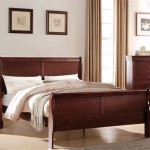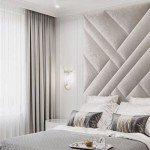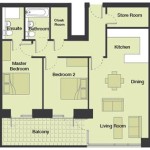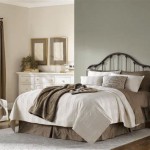Illuminating Serenity: A Guide to Indoor LED Lights for the Bedroom
The bedroom is often considered a sanctuary, a space dedicated to rest, relaxation, and rejuvenation. Consequently, the lighting within this space plays a crucial role in shaping the ambiance and overall comfort. Indoor LED lights have emerged as a popular choice for bedroom illumination due to their versatility, energy efficiency, and ability to create a variety of moods. This article explores the diverse applications of LED lighting in the bedroom, examining different types, design considerations, and their impact on sleep and well-being.
LEDs, or Light Emitting Diodes, are semiconductor light sources that emit light when an electric current passes through them. Unlike traditional incandescent bulbs that produce light through heat, LEDs generate light directly, making them significantly more energy efficient. This efficiency translates to lower electricity bills and a reduced environmental footprint. Furthermore, LEDs boast a considerably longer lifespan compared to incandescent and fluorescent bulbs, minimizing the need for frequent replacements. The durability, affordability, and versatility of LED lighting make it a compelling choice for modern bedrooms. Beyond their practical benefits, LEDs offer a wide spectrum of color temperatures and brightness levels, allowing for precise control over the ambiance of the room.
The selection of appropriate LED lighting for a bedroom involves careful consideration of several factors, including the size of the room, the existing décor, the desired mood, and individual preferences. A well-lit bedroom should incorporate a combination of ambient, task, and accent lighting to create a layered and functional space. Ambient lighting provides general illumination, task lighting focuses on specific areas for activities like reading or dressing, and accent lighting highlights architectural features or decorative elements. By strategically combining these different types of lighting, it is possible to create a visually appealing and comfortable bedroom environment.
Key Considerations for Choosing Bedroom LED Lighting
Selecting the right LED lighting for a bedroom requires a thoughtful approach that takes into account various factors. These factors range from the technical specifications of the lights themselves to the overall aesthetic goals of the room’s design. Neglecting these considerations can lead to a bedroom that is either poorly lit, visually jarring, or fails to create the desired atmosphere.
One crucial aspect is color temperature. Color temperature is measured in Kelvin (K) and indicates the "warmth" or "coolness" of the light emitted. Lower Kelvin values (around 2700K-3000K) produce a warm, yellowish light, which is generally considered more relaxing and conducive to sleep. Higher Kelvin values (4000K-6500K) produce a cool, bluish-white light, which is more stimulating and suitable for tasks that require focus. For the bedroom, warm white or soft white LEDs are typically recommended to promote relaxation and prepare the body for sleep. Avoid using cool white or daylight LEDs in the bedroom, especially close to bedtime, as they can interfere with melatonin production and disrupt sleep patterns. Some advanced LED lighting systems offer adjustable color temperature, allowing users to customize the lighting to suit their needs and preferences throughout the day.
Brightness is another critical consideration. LED brightness is measured in lumens, which indicates the total amount of light emitted by the bulb. The appropriate lumen output for a bedroom depends on the size of the room and the desired level of illumination. As a general guideline, a small bedroom (around 100 square feet) may require around 2,000-4,000 lumens, while a larger bedroom (around 200 square feet) may require 4,000-8,000 lumens. However, these are just estimates, and individual preferences may vary. It's often best to err on the side of slightly less light and use dimmer switches to adjust the brightness to the desired level. Dimmers offer greater control over the ambiance and allow for creating different moods for various activities.
Finally, consider the style and design of the LED fixtures themselves. LED lights are available in a wide range of styles, from traditional lamps and chandeliers to modern recessed lights and strip lights. The style of the fixtures should complement the overall décor of the bedroom. Recessed lights are a good option for general ambient lighting, as they provide a clean and unobtrusive look. Table lamps and floor lamps can add warmth and character to the room, while also providing targeted task lighting for reading or other activities. LED strip lights can be used to create accent lighting, highlighting architectural features or adding a subtle glow to headboards or shelves. The placement of the lights is also crucial. Avoid placing bright lights directly in the line of sight, as this can cause glare and discomfort. Instead, focus on indirect lighting techniques, such as bouncing light off walls or ceilings to create a softer and more diffused illumination.
Types of LED Lighting Suitable for Bedrooms
The market offers a plethora of LED lighting options suitable for bedroom applications. Understanding the characteristics of each type allows for informed decision-making and the creation of a customized lighting scheme that meets individual needs and preferences.
LED bulbs, designed as direct replacements for traditional incandescent or fluorescent bulbs, come in various shapes and sizes, including A-shape, globe, and candle. They are versatile and can be used in a wide range of fixtures, such as table lamps, floor lamps, and ceiling fixtures. LED bulbs are a cost-effective way to upgrade existing lighting to LED technology without replacing the entire fixture. When selecting LED bulbs, pay attention to the base type (e.g., E26, E12), the wattage equivalent, and the color rendering index (CRI). CRI measures the ability of a light source to accurately render the colors of objects compared to natural sunlight. A higher CRI (80 or above) is generally preferred for bedroom lighting, as it ensures that colors appear natural and vibrant.
LED strip lights, also known as LED tape lights, consist of a flexible circuit board with surface-mounted LEDs. They are incredibly versatile and can be used to create accent lighting in a variety of applications, such as under-cabinet lighting, cove lighting, and backlighting for headboards or mirrors. LED strip lights are typically available in rolls that can be cut to the desired length and easily installed using adhesive backing. They are also available in a range of colors and brightness levels, allowing for customizable lighting effects. Some LED strip lights even offer color-changing capabilities, allowing users to create dynamic lighting scenes with different colors and patterns. When using LED strip lights in the bedroom, consider using a dimmer to adjust the brightness and avoid placing them directly in the line of sight, as they can be quite bright.
Recessed LED lights are installed flush with the ceiling, providing a clean and unobtrusive look. They are a good option for general ambient lighting in the bedroom, especially in rooms with low ceilings. Recessed LED lights are available in a variety of sizes and styles, including traditional can lights and more modern slim-profile lights. They offer excellent energy efficiency and long lifespan, making them a sustainable lighting choice. When installing recessed LED lights, be sure to follow the manufacturer's instructions and consult with a qualified electrician to ensure proper wiring and installation. Proper spacing and placement of the lights are crucial for achieving uniform and even illumination throughout the room. Dimmable recessed LED lights are highly recommended, as they allow for adjusting the brightness to suit different activities and moods.
Optimizing Bedroom LED Lighting for Sleep and Well-being
The impact of lighting on sleep and overall well-being is increasingly recognized. Strategic use of LED lighting can contribute to a healthier and more restful sleep environment.
Circadian rhythm, the body's natural sleep-wake cycle, is heavily influenced by light exposure. Exposure to blue light, emitted by electronic devices and some LED lights, can suppress melatonin production, a hormone that regulates sleep. Therefore, minimizing exposure to blue light in the evening is crucial for promoting healthy sleep patterns. One effective strategy is to use warm-toned LED lights in the bedroom, especially in the hours leading up to bedtime. Warm white or soft white LEDs with a color temperature of 2700K-3000K emit less blue light and are less likely to interfere with melatonin production. Additionally, consider using blue light filters on electronic devices or wearing blue light blocking glasses in the evening. Reducing screen time before bed can also significantly improve sleep quality.
Dimmable LED lights offer a flexible and customizable way to create a relaxing bedroom environment. By dimming the lights in the evening, it signals to the body that it's time to wind down and prepare for sleep. Dimming the lights also reduces eye strain and creates a more soothing atmosphere. Consider installing dimmer switches on all the main light fixtures in the bedroom, including ceiling lights, table lamps, and floor lamps. This allows for easily adjusting the brightness to the desired level depending on the activity and time of day. Some smart LED lighting systems even offer automated dimming schedules, gradually reducing the brightness of the lights as bedtime approaches.
In addition to ambient and task lighting, consider incorporating accent lighting to create a more visually appealing and relaxing bedroom environment. Accent lighting can be used to highlight architectural features, artwork, or other decorative elements. For example, LED strip lights can be used to backlight a headboard, creating a soft and subtle glow. A strategically placed table lamp can highlight a favorite piece of artwork. The key is to use accent lighting sparingly and avoid creating harsh or distracting shadows. The goal is to enhance the overall ambiance of the room and create a sense of calm and tranquility. By carefully considering the color temperature, brightness, and placement of LED lighting, it is possible to create a bedroom environment that promotes restful sleep and enhances overall well-being.

Led Fairy Lights Plug In Bedroom Indoor String Decorative White 13ft 16ft 19ft 33ft 65ft Etsy

Daybetter 100ft Rgb Led Strip Lights With 44 Key Remote And 24v Power Supply For Bedroom Kitchen Party Indoor Decor

Honche Led Curtain Lights Indoor 300leds Waterfall Fairy String Bedroom Christmas Decoration Lighting Rainbow Color

Indoor Led Strip Lights Cync

Xtreme Lit 10ft Cut Customize Indoor Led Light Strip Kit Includes 1 Connector 90 Leds 4 Modes Remote

Honche Led Curtain Lights Indoor 300leds Waterfall Fairy String Bedroom Decoration Lighting Cool White

21 In Smart Led Indoor White Rgb Modern Low Profile Flush Mount Ceiling Fan With Light Remote Control For Bedroom

Curtain Lights For Bedroom Fairy Indoor String Window 9 8ft X Usb Powered 300 Leds 8 Modes

Smart Firework Led Strip Lights Indoor Fireworks Music Mic Sync With Launch Effect Remote App Control Rgb Color Changing

Led Lights For Bedroom 16 4ft 3528 Light Strip Color Changing Rope With 12v Power Adapter Home Room Office Indoor Outdoor
See Also








